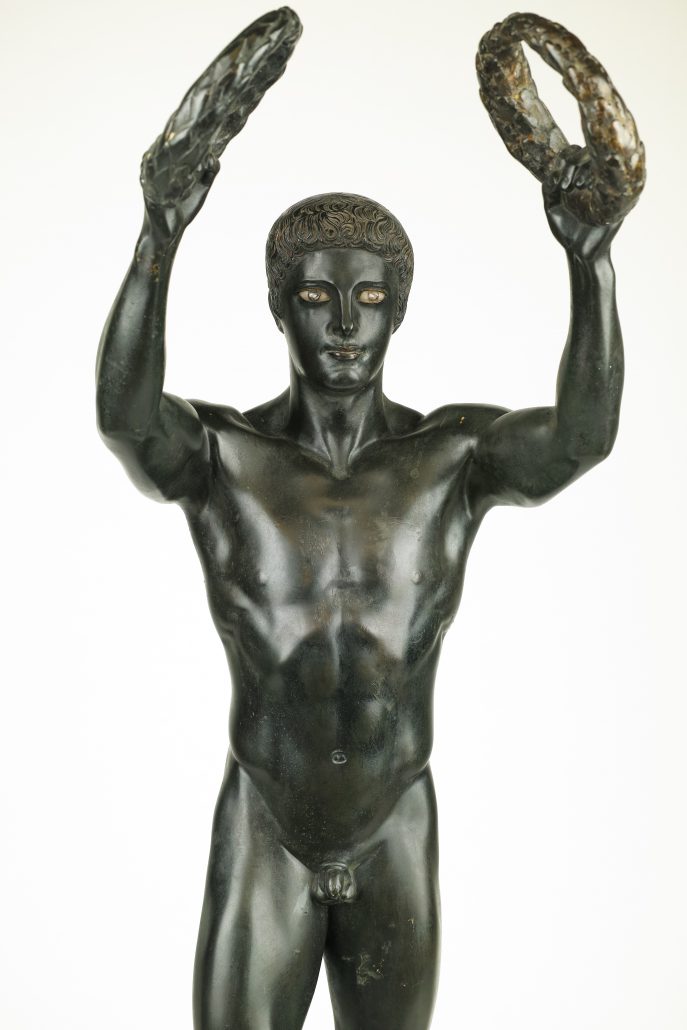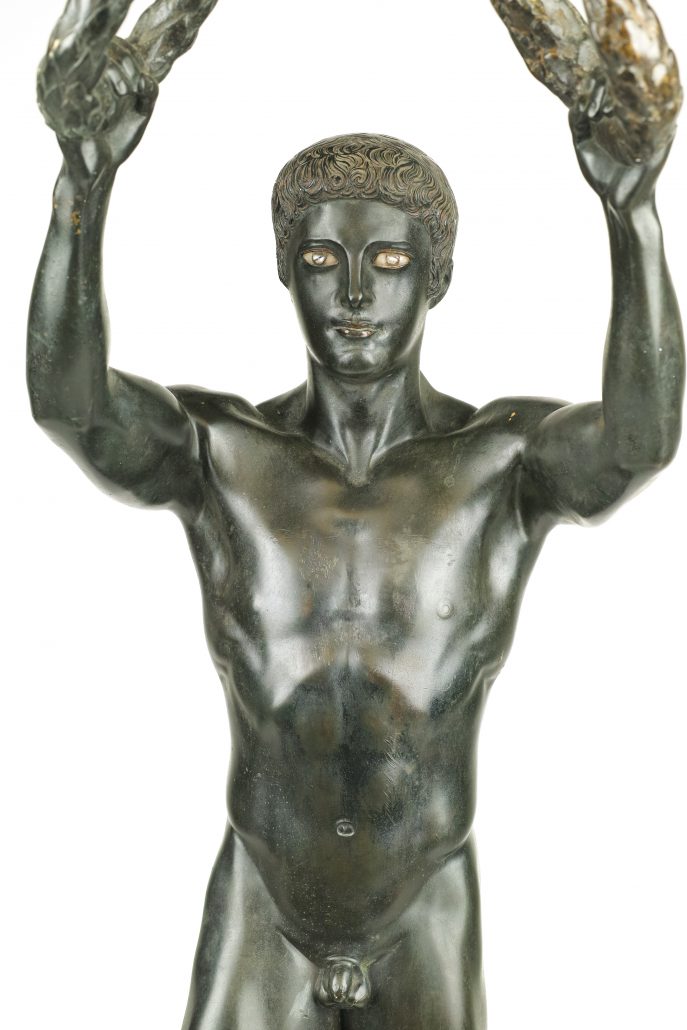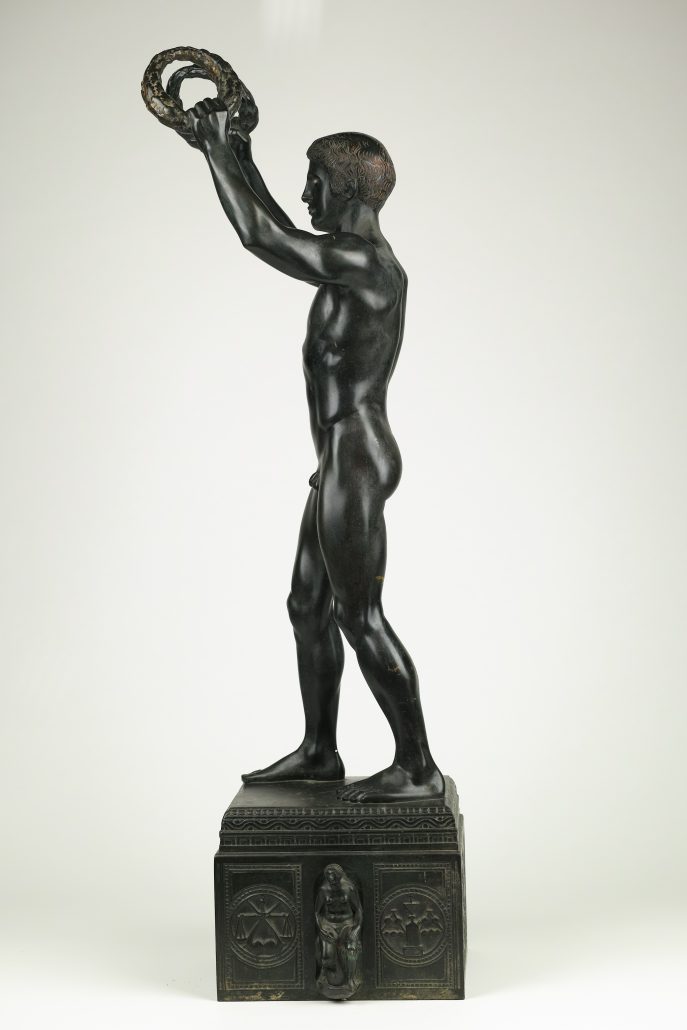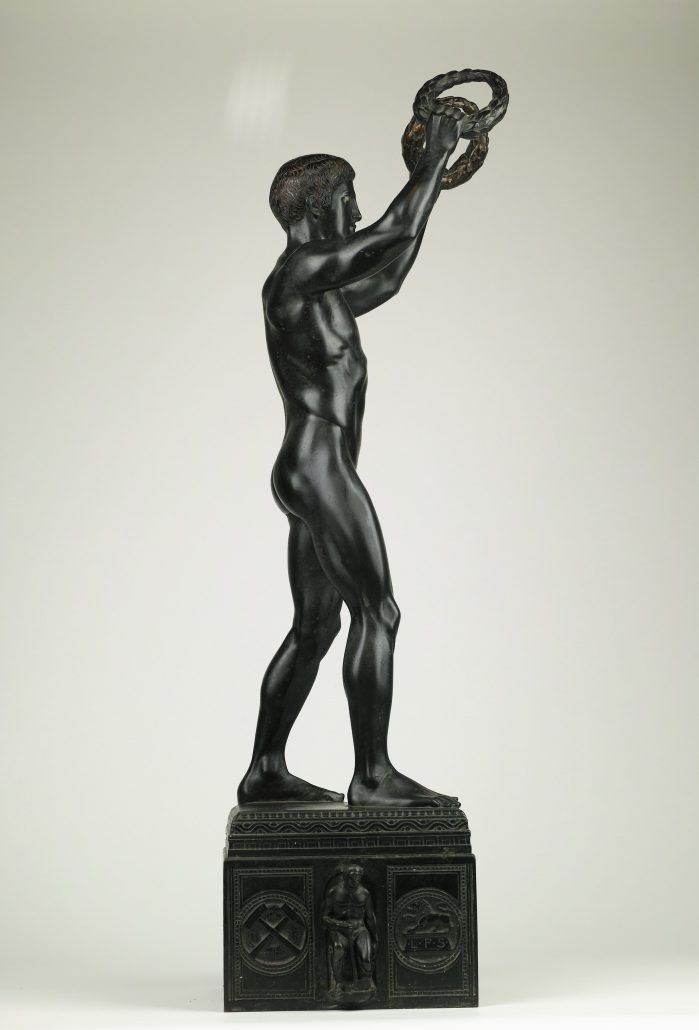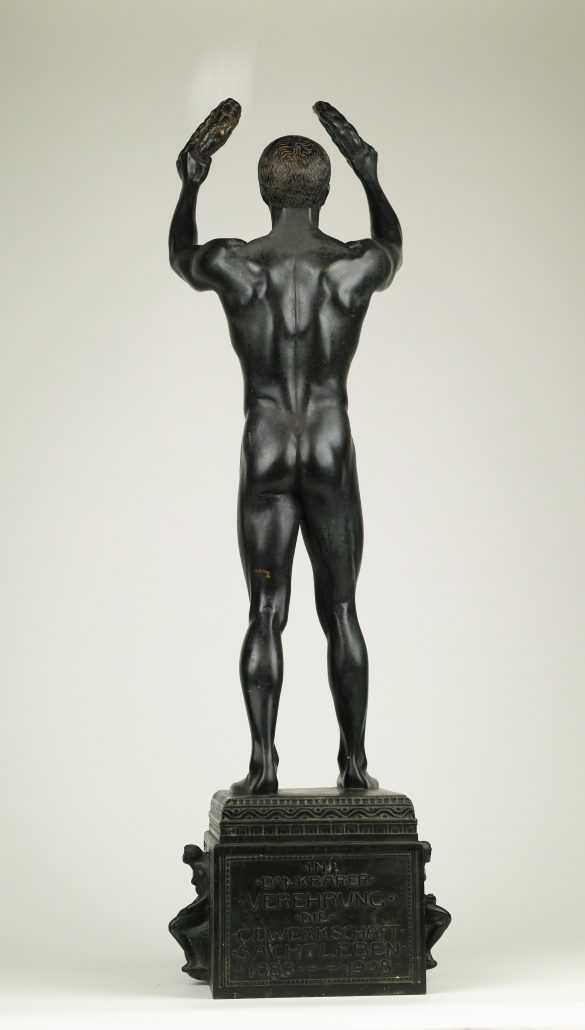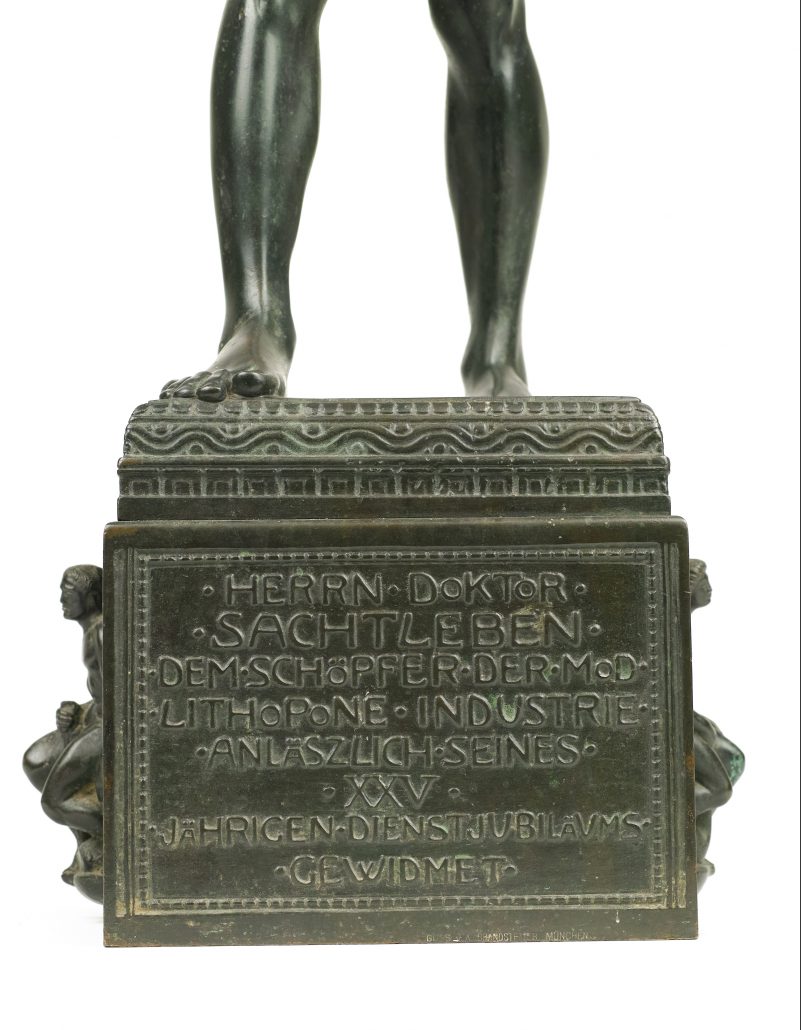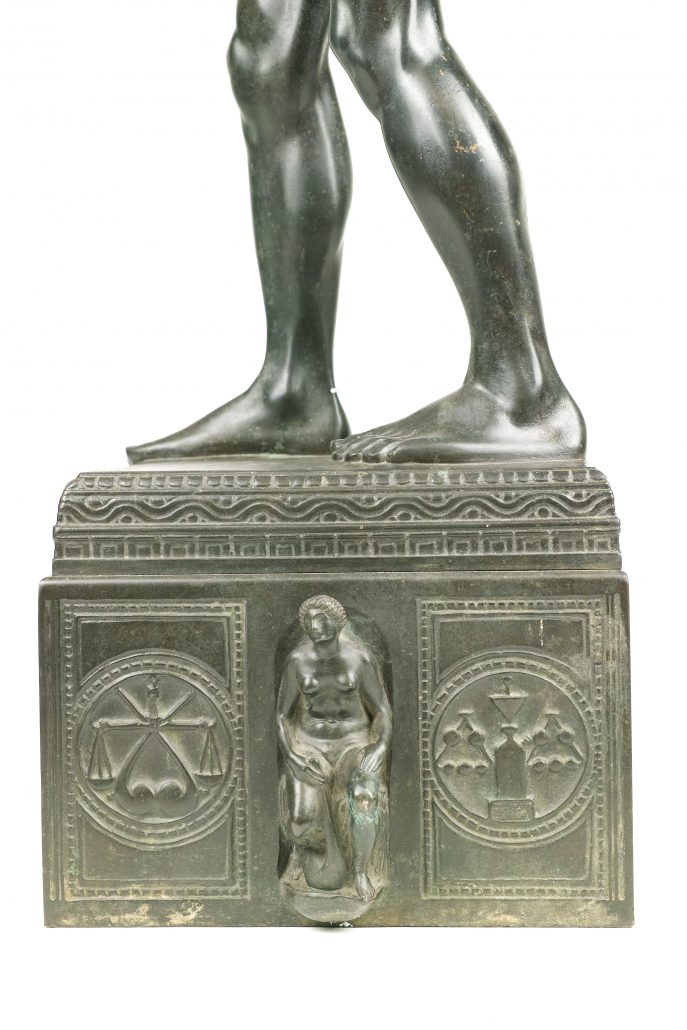Heinrich Jobst
1874 – 1943
German School
Victor Ludorum, 1908
Period sandcast bronze. Gray brown patina. Inlaid glass eyes (Hazel brown and opal white.) Signed: H. JOBST (signature heightened after casting.) Base height: 14,4cm, with allegorical figures related to
the chemical industry in high relief on sides of sockel. Additional images in low releif. Figure of a lion with the initials: L.F.S. Height of figure 78cm (31” inches). Global height: 92.4cm (36 ½” inches).
Founder’s mark: Brandstetter, München.
Inscription in relief on front face of sockel:
.HERRN DOKTOR./.SACHTLEBEN./.DEM. SCHÖPFER.DER.MOD./.LITHOPONE.INDUSTRIE./:ANLÄSZLICH.SEINES/.XXV./.JÄHRIGEN. DIENSTJUBILÄUMS./.GEWIDMET.
Incription on verso:
IN./.DANKBARER./.VEREHRUNG./.DIE./.GEWERKSCHAFT./.SACHTLEBEN./.1883.-.1908.
Unique cast.
Presentation cast to celebrate the 25th anniversary at Sachtleben & Co. of Dr. August Theodor Rudolf Sachleben (Braunschweig, 11 December, 1856 – 6 July, 1917). Doktor Sachleben invented a process for whitening porcelain, which removed the dangerous and poisonous chemicals that were used previous to his discovery, and which endangered the lives of those who came into contact with them.
Heinrich Jobst studied at the Munich Academy. In 1900 onward, he became a student of Georg Wrba, and in 1901, a faculty member of the institution. In 1907, Jobst was called upon to become Professor of Sculpture at the Matildenhöhe in Darmstadt, an artist’s colony that included architects, sculptors and painters in its ranks: J.M. Olbrich, P. Behrens, P. Huber, H. Christiansen. P. Bürck, L. von Habich, and R. Bosselt. Jobst executed the relief for the famous Hochzeitsturms designed by Josef Maria Olbrich, which flank the principal entrance to the Matildenhöhe and which greet hundreds of thousands of visitors yearly to the monumental complex.
Jobst’s sculptures (for the most part in museum collections, or monumental works placed on public squares) are extremely rare on the market.


